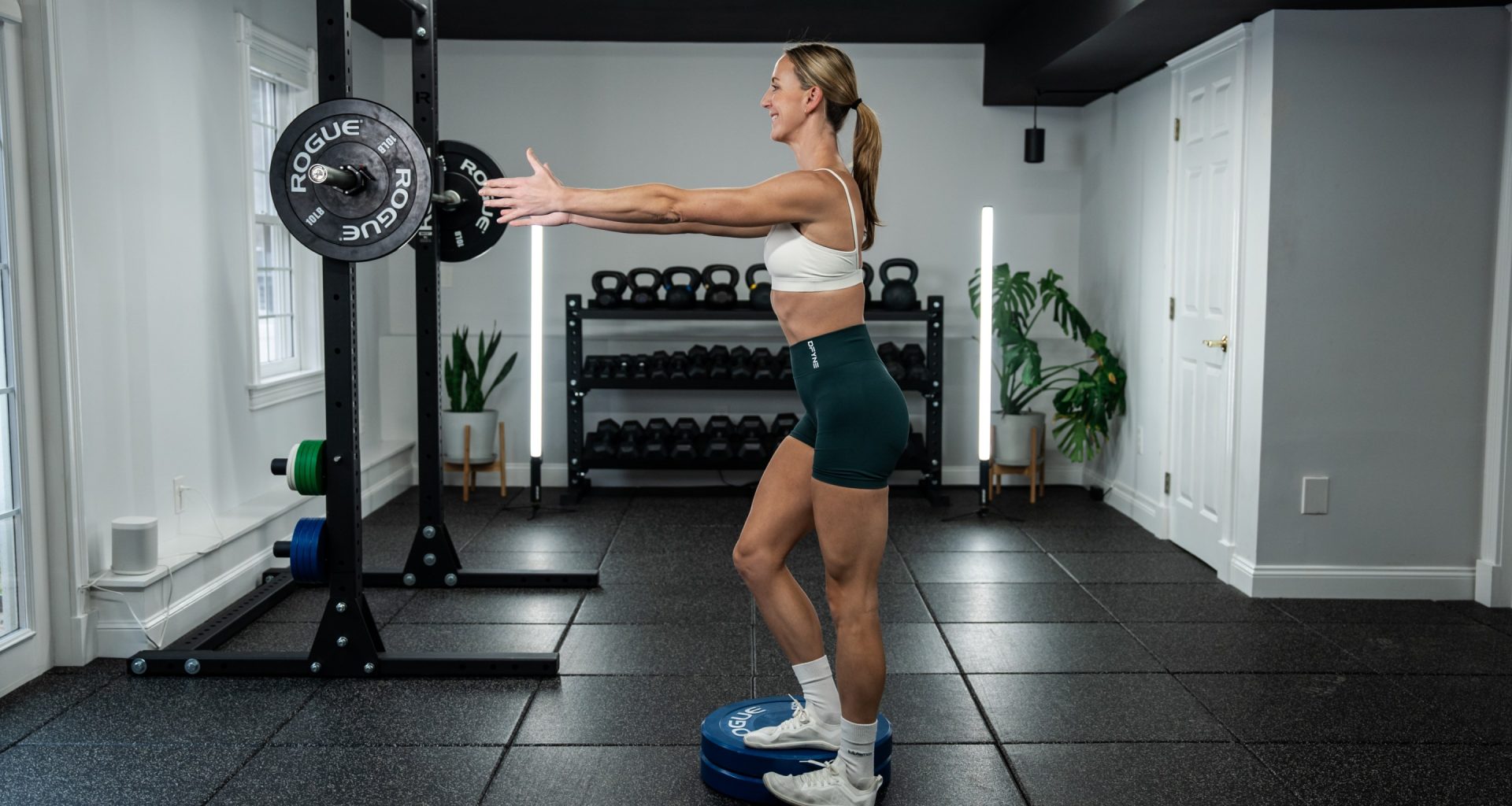“It’s a display of strength and mobility,” says Lauren Pak, CPT, who runs a fitness training business with her husband, Jason. “It’s something that’s achievable, but also really challenging.”
To complete a pistol squat progression successfully, you need serious strength in your quads, hamstrings, and glutes, plus a good deal of ankle and hip mobility. But as long as you don’t have issues with knee flexion or find the movement painful, Pak says pistol squats should be in reach for most people.
Experts In This Article
Even if the ground seems impossibly far away or you currently fall back on your butt with every attempt, building up the necessary skills just takes the right preparation. Pak broke down the pistol squat progression for us, including exactly where to begin, plus the drills and form cues that can help you pull off a pistol squat like a pro.
3-part pistol squat progression plan
1. Start with single-leg step downs
The first order of business is building up the strength of the standing leg, which will be doing the majority of the work. Pak says single-leg step downs are a great way to do this while mimicking the actual movement of a pistol squat.
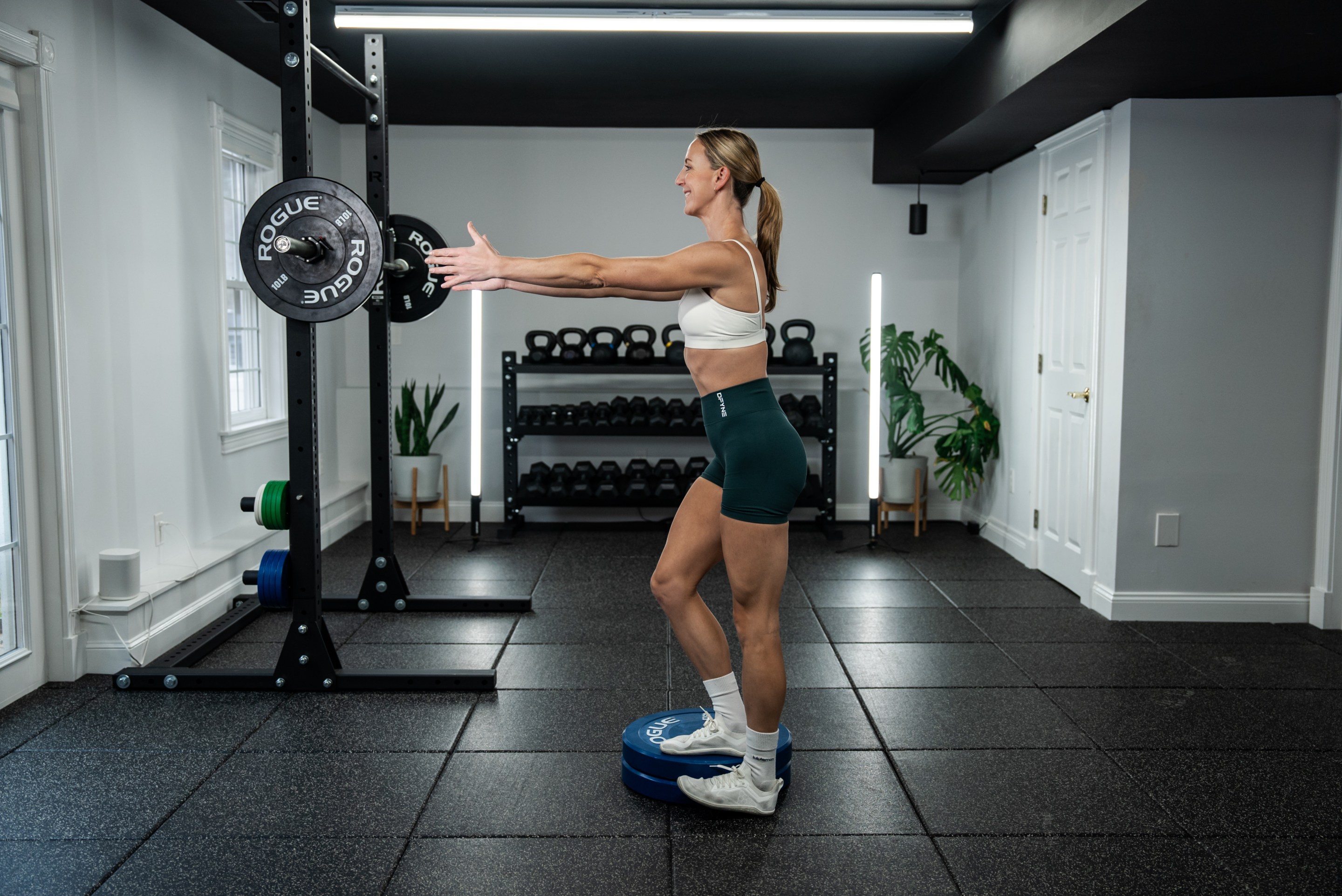
- Stand on the edge of a couple of weight plates or a small box with your right foot, while your left foot hangs off the side.
- Squat with your right leg deep enough so that your left heel can lightly tap the ground below.
- Stand back up using just the strength of your right leg.
Variation: If you’re struggling with your balance, Pak recommends holding on to something like TRX straps for a little extra stability. Over time, try to use the straps less and less until you’re balancing on your own.
Progression: Once you feel comfortable doing these step downs a few times in a row (on both legs), start to increase the height of the platform you’re on so that you have to move through a bigger range of motion to get that heel all the way to the ground below.
2. Move into step downs with a forward leg swing
Once you’ve built up the strength to go deeper and deeper into that squat, it’s time to increase the mobility challenge and the strength of the hip flexors by swinging the opposite leg forward while you squat.
“That creates a little bit more of what the pistol squat requires, which is that you have to keep that other leg straight and up off the ground,” says Pak. The added elevation gives you more room for that leg to swing forward without hitting the ground.
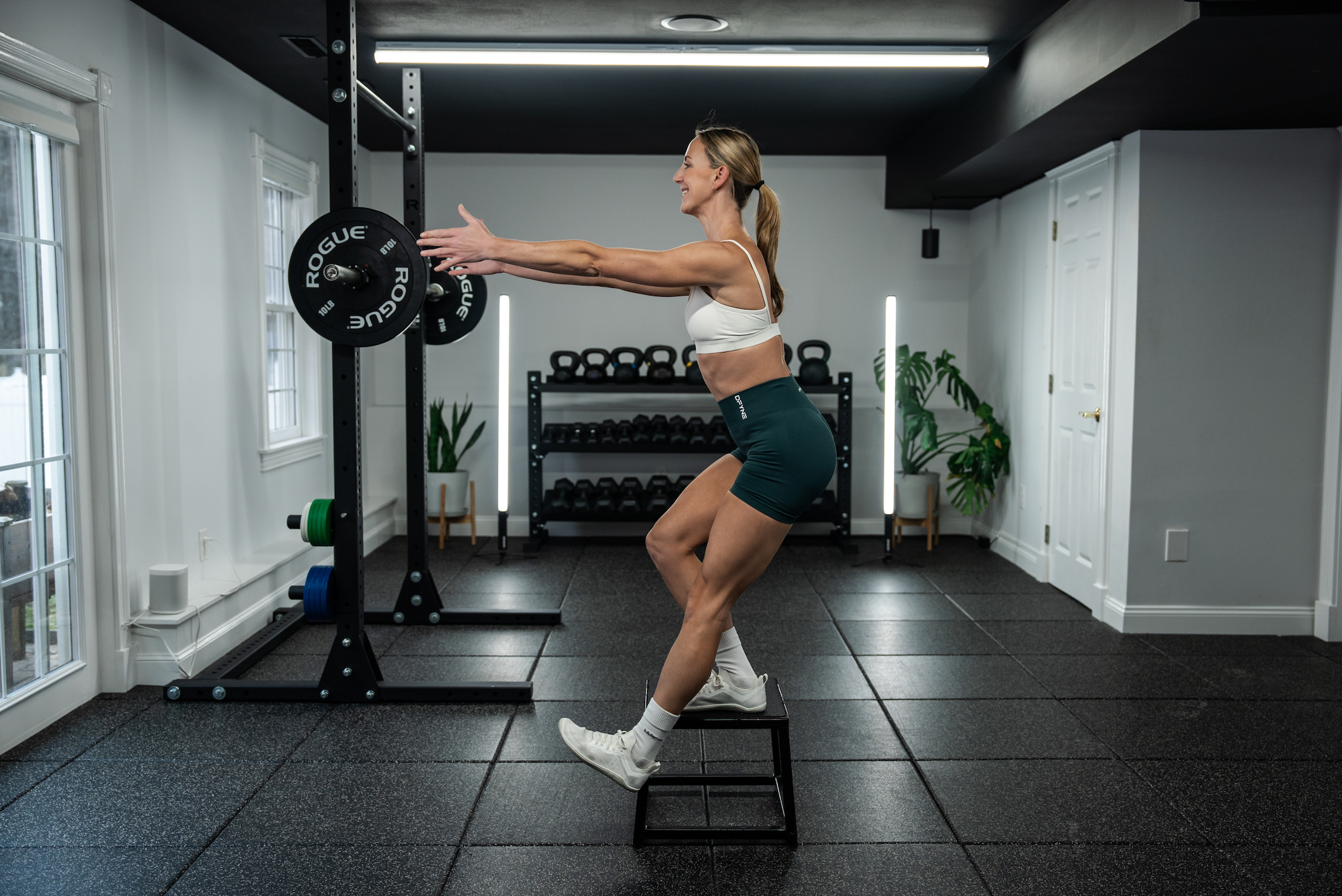
- Stand on the edge of an elevated platform, like a box or stacked weight plates, with your right foot. Let your left foot hang off the side.
- Squat down with your right leg, but this time, instead of reaching your left heel toward the ground, swing it forward like you would in a pistol squat.
- Stand back up and bring your left leg back underneath you.
Variation: To help counterbalance your weight so that you can go deeper into the squat more easily, hold a weight like a heavy dumbbell or weight plate out in front of your chest.
Progression: Once you’re able to make it all the way down to the bottom of the squat on each leg, start to lower the elevation (via fewer weight plates or a shorter box) to incrementally increase the challenge. Eventually, you’ll get to a place where you don’t need any extra elevation, and you’ll officially be doing full pistol squats.
3. Mobility drills can help your pistol squat
If you’ve completed the pistol squat progression and built the strength to do deep single-leg squats, but find you don’t quite have the range of motion to get as low as you need for a pistol squat, Pak has a couple of suggestions.
For ankle mobility: Kneeling ankle glide
“When you see somebody do a pistol squat successfully, their knee has to go pretty far forward in order to be able to get all the way down,” Pak says. Otherwise, your torso will fall backward. A kneeling ankle glide can build the mobility to help your body get into the proper position.
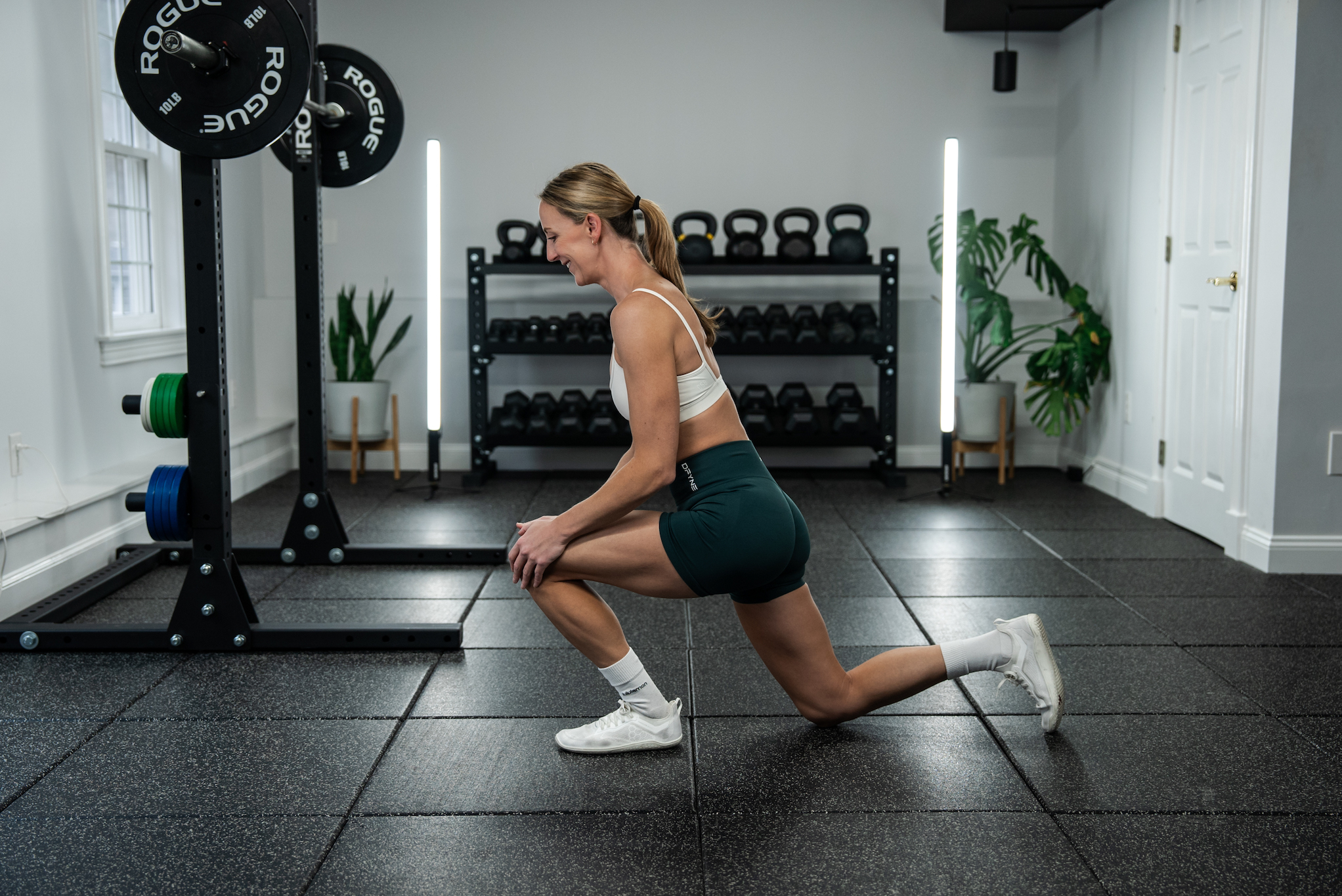
- Kneel on the floor with your left foot forward.
- Lean forward and push your left knee over the left toes as far as you can while keeping your left heel on the ground.
- Return to the start.
- Repeat several times, trying to go further each time, then switch sides.
Variation: Pak says you can add a weight plate on top of the knee to eke out a little extra range of motion.
For hip mobility: Prying squats
If your hips are too tight to reach your butt all the way down to your heel, Pak suggests this drill:
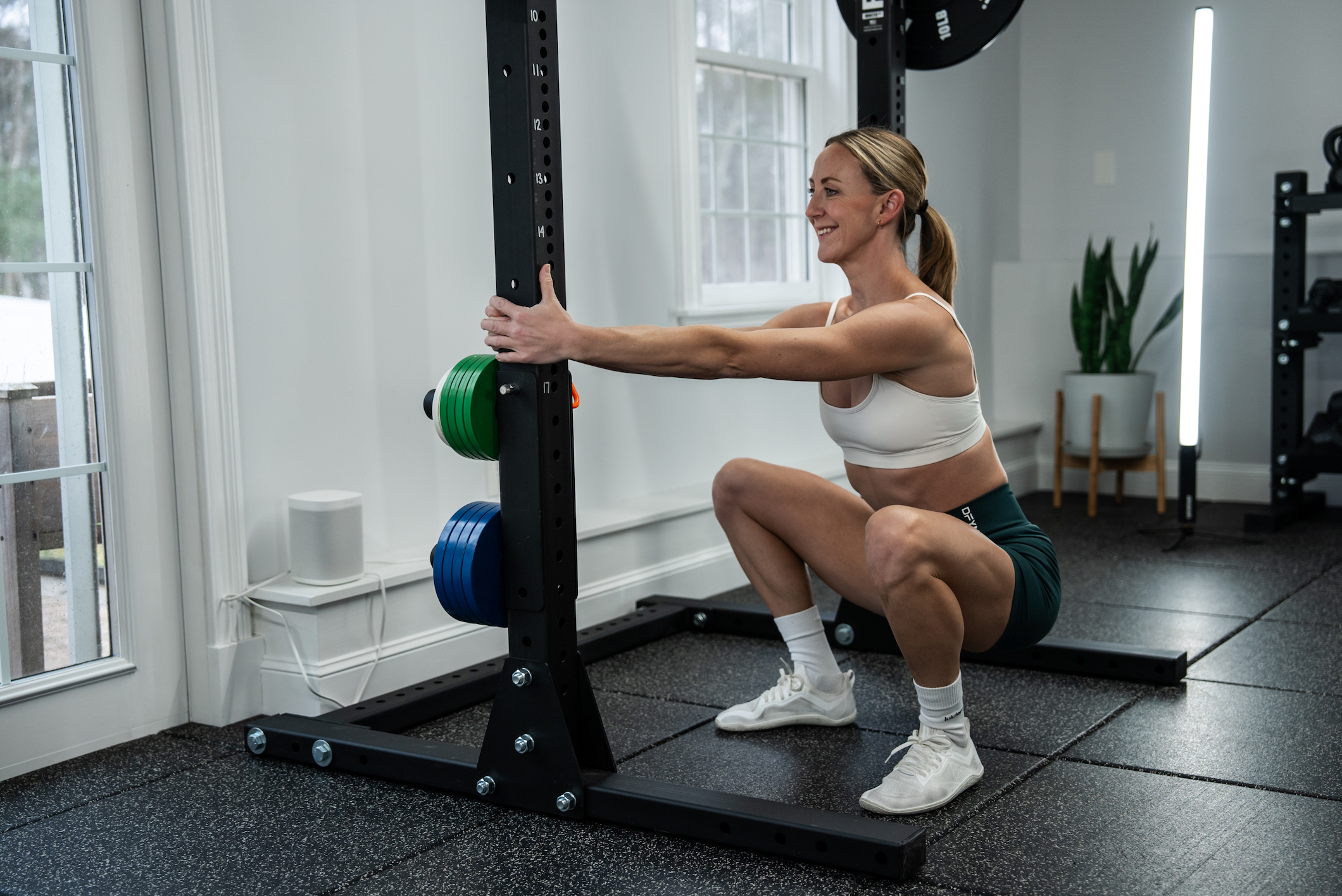
- Standing upright on both feet, hold onto something like a squat rack or pole.
- Lower down into the bottom of a squat position.
- Push your knees out to the sides to pry your hips open and wiggle your hips lower. “You’re just trying to get yourself down as low as you can while trying to keep your chest open [with a] nice long spine. And that’s really going to start to open the hips up a little,” Pak says.
4 form cues to successfully pull off a pistol squat
Pak says she sees a few common mistakes that keep people from completing a pistol squat. Keep these technique tips in mind so that you’re not unintentionally making things harder for yourself.
1. Keep your weight balanced over the middle of your working foot
When people try to quickly get down into a pistol squat and back up again, Pak says it’s common to let the forward leg veer out to the side while leaning the upper body in the opposite direction. But this won’t build the full strength to do a slow, controlled pistol squat.
“Try to make sure that leg is staying in close and straight out in front of you,” she says.
2. Let your lower back round
Most of the time when we’re working out, we’re told to keep a neutral spine. But in a pistol squat, you actually want that lower back to tuck under a bit. “If people try to stay too straight, it prevents them from being able to do the pistol squat,” Pak explains.
3. Lead with the knee
You might have been warned by a trainer at some point that it’s dangerous to let your knee go past your toes. Physical therapists now say that’s a myth, and this is one instance where you really need that knee to go in front of the toes.
Pak suggests thinking of the knee actively moving forward as you sink down into the squat.
4. Allow your chest to come forward
This is one more example of a common squat cue that needs to be ignored when you’re doing a pistol squat. Instead of keeping your chest upright, you’ll benefit from bringing it further forward in this move to correctly balance your weight.
Our editors independently select these products. Making a purchase through our links may earn Well+Good a commission.
Source: Well and Good

